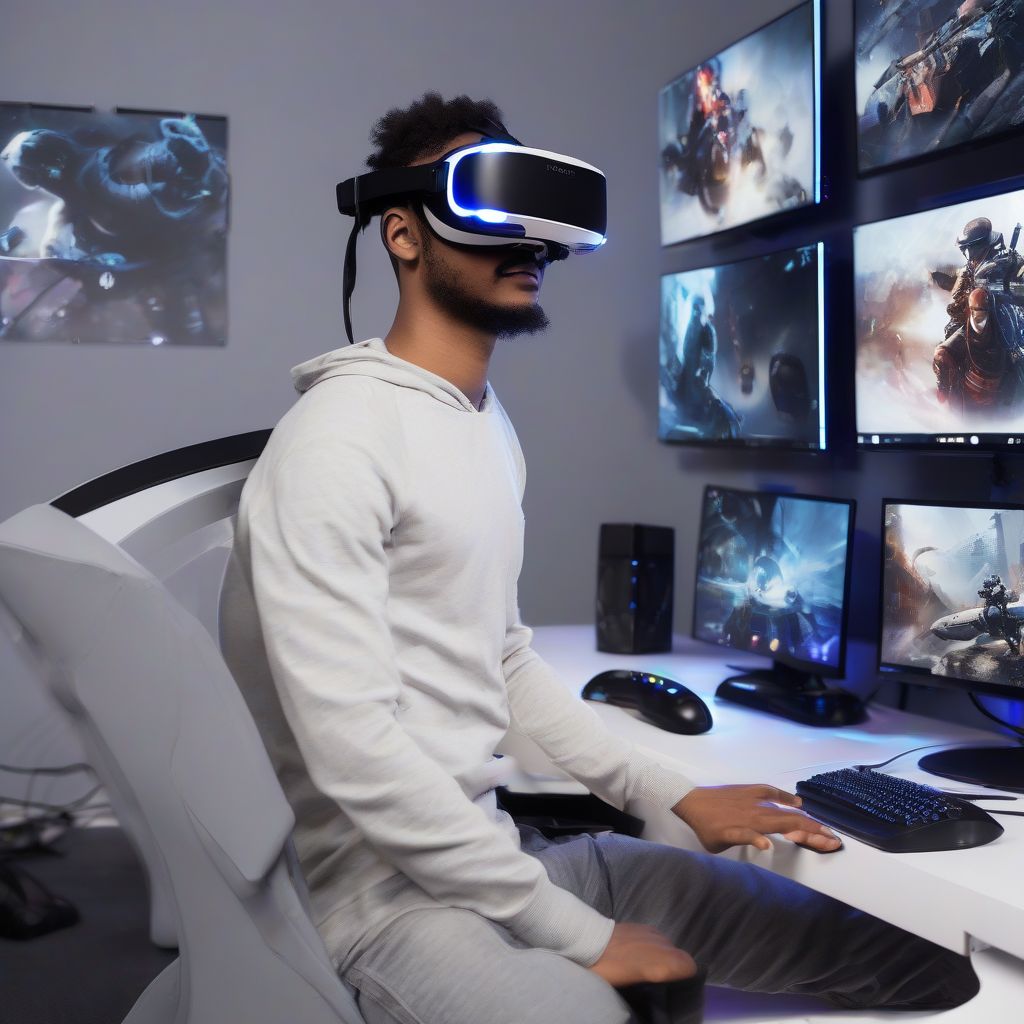Imagine this: you’ve finally invested in a VR headset and are ready to dive into immersive gaming experiences. You put on the headset, but instead of smooth sailing through virtual worlds, you’re met with choppy visuals, lagging gameplay, or even worse – a dreaded error message. Frustrating, right?
Don’t worry, you’re not alone. Just like any technology, VR gaming can have its fair share of hiccups. But the good news is that most common VR gaming issues are easily fixable with some troubleshooting. This article will be your comprehensive guide to identifying and resolving those pesky problems that might be hindering your virtual adventures. Let’s get you back to enjoying seamless VR experiences!
Understanding the Common Culprits: What’s Causing Your VR Woes?
Before we jump into solutions, it’s helpful to understand what might be causing those VR gaming issues. Here are some usual suspects:
1. Hardware Headaches:
- Insufficient PC Specs: VR gaming demands a lot from your computer. If your system doesn’t meet the minimum requirements (especially the graphics card and processor), you’ll likely encounter performance issues.
- Outdated Drivers: Graphics card drivers are crucial for optimal VR performance. Outdated or incompatible drivers can lead to glitches, crashes, and poor visual fidelity.
- Connection Problems: A shaky connection between your headset and PC (whether wired or wireless) can cause tracking issues, lag, and even disconnections.
- Headset Malfunctions: Sometimes, the issue might lie within the VR headset itself. This could be due to faulty sensors, lens problems, or even a loose cable connection.
2. Software Snags:
- Game Optimization: Not all games are created equal when it comes to optimization. Some games might be poorly optimized for VR, leading to performance issues even on high-end systems.
- Conflicting Software: Certain background applications or programs can interfere with VR software, causing slowdowns or crashes.
- Outdated VR Software: Just like your graphics drivers, your VR software (such as SteamVR or Oculus software) needs to be up-to-date to ensure compatibility and performance.
3. Environmental Factors:
- Tracking Issues: VR headsets rely on sensors to track your movements in the real world. If these sensors are blocked, have poor lighting, or are confused by reflective surfaces, you’ll experience tracking problems.
- Limited Play Area: A cramped or cluttered play area can hinder your movements and lead to frustrating interruptions.
 VR Gaming Setup
VR Gaming Setup
Troubleshooting Common VR Gaming Issues: A Step-by-Step Approach
Now that we’ve identified the potential troublemakers, let’s dive into the solutions. Follow these steps in order to troubleshoot and fix those VR gaming issues:
Step 1: Check Your PC Specs and Drivers
- Meet the Minimum Requirements: Head to the website of your VR headset manufacturer or the game developer’s website to find the recommended system requirements. Ensure your PC meets or exceeds these requirements, especially for your graphics card, processor, and RAM.
- Update Graphics Drivers: Visit the website of your graphics card manufacturer (Nvidia or AMD) and download the latest drivers for your specific card model.
- Verify System Compatibility: Some VR platforms offer compatibility tools. For example, SteamVR has a built-in system report that analyzes your PC’s specs and tells you if it meets the requirements for VR.
Step 2: Optimize Your VR Software and Settings
- Close Unnecessary Applications: Close any background applications or programs you don’t need while gaming, as they can eat up system resources.
- Adjust In-Game Graphics Settings: Lowering the graphics settings in your VR games can significantly improve performance. Start by reducing the resolution, anti-aliasing, and shadow quality.
- Update Your VR Software: Check for updates for your VR platform (like SteamVR or Oculus software) and install them to ensure optimal compatibility and performance.
Step 3: Fine-tune Your VR Hardware Setup
- Ensure Proper Connection: Double-check all the connections between your VR headset and your PC. Make sure cables are securely plugged in and that your wireless connection is strong and stable.
- Calibrate Your VR Headset: Most VR headsets have a calibration process. This helps align the sensors and ensure accurate tracking. Refer to your headset’s user manual for specific calibration instructions.
- Optimize Your Play Area: Choose a well-lit play area that’s free from clutter and obstacles. Make sure the sensors have a clear line of sight and aren’t being affected by reflective surfaces.
Step 4: Troubleshoot Specific VR Gaming Issues
- Lag or Stuttering: If your gameplay is lagging or stuttering, the issue often lies with performance. Try the following:
- Lower in-game graphics settings.
- Close background applications.
- Update your graphics drivers.
- Consider upgrading your PC hardware if it consistently struggles to meet the demands of VR gaming.
- Tracking Problems: If your headset isn’t tracking your movements accurately, try these fixes:
- Clean the headset sensors.
- Recalibrate your VR headset.
- Adjust the lighting in your play area. Avoid overly bright or dim lighting conditions.
- Ensure there aren’t any reflective surfaces in your play area.
- Motion Sickness: VR sickness is a common issue for some users. Here’s how to minimize discomfort:
- Start with short VR sessions and gradually increase the duration as you acclimate.
- Take breaks if you start feeling unwell.
- Adjust the in-game comfort settings (such as field of view and turning speed) to find what feels best for you.
- Error Messages: If you encounter specific error messages, consult the VR platform’s support website or online forums for solutions.
Step 5: Seek Expert Help
If you’ve exhausted all troubleshooting steps and are still facing issues, don’t hesitate to reach out to the support teams of your VR headset manufacturer or the game developer. They can provide further assistance and guidance.
Conclusion: Smooth Sailing in Virtual Worlds
Troubleshooting VR gaming issues might seem daunting, but by following these steps, you can overcome most common problems and get back to enjoying seamless and immersive virtual experiences. Remember, just like maintaining a healthy lifestyle, keeping your VR setup optimized is key to long-term enjoyment. Now, go explore those virtual worlds without interruption!
If you’ve encountered any unique VR gaming issues or have discovered clever solutions, feel free to share them in the comments below. Let’s create a community where we can all help each other navigate the exciting world of virtual reality gaming!
[amazon bestseller=”VR Gaming Headsets”]
